Tag: Love
[word challenge] – Blue
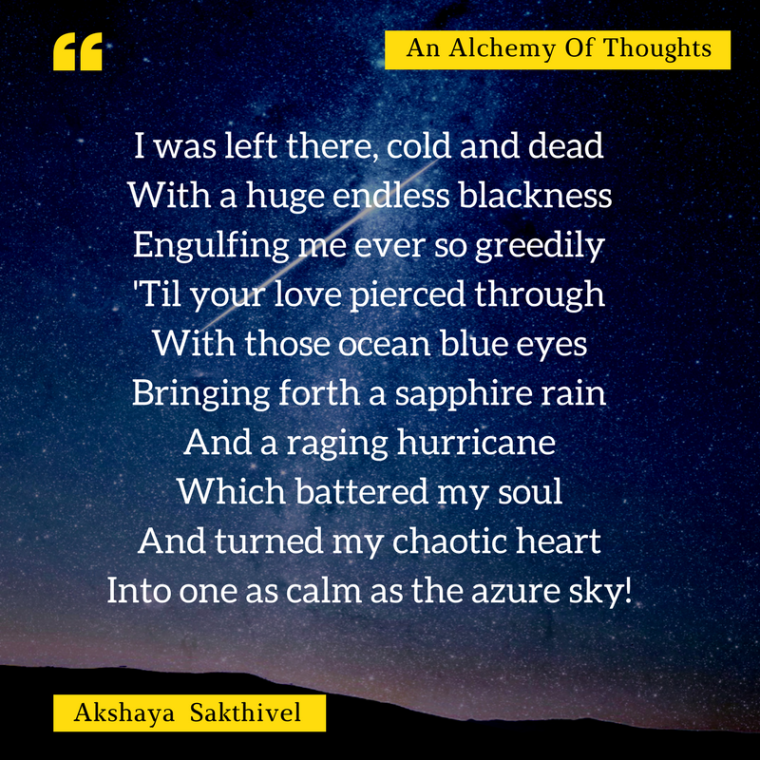
Coincidence

A Tryst With The Sea
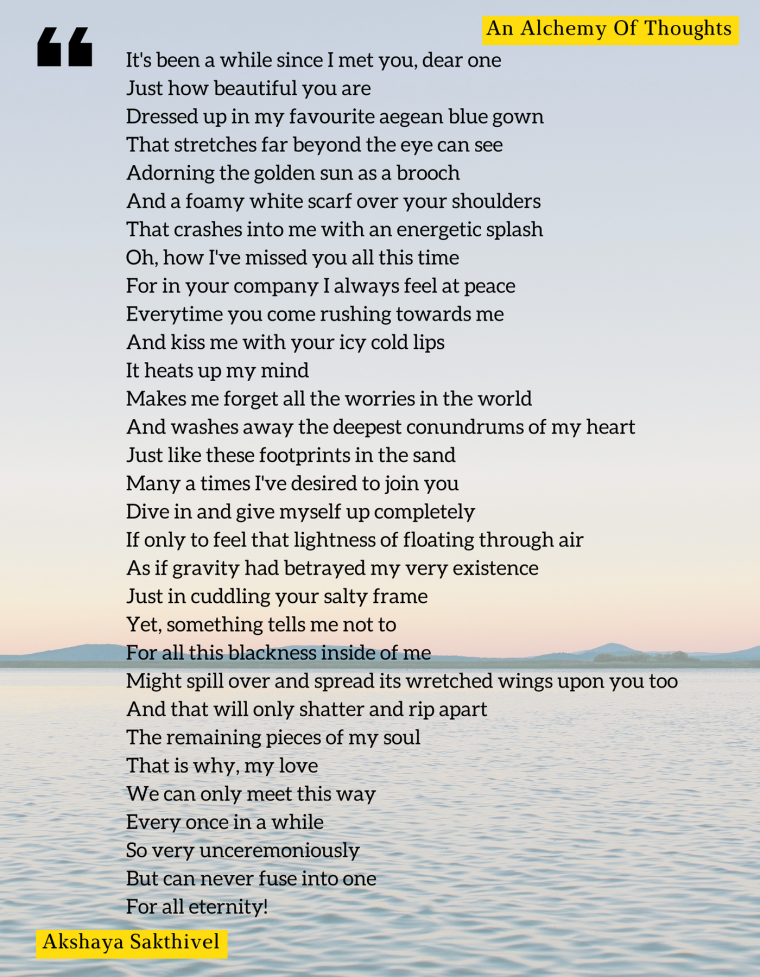
Grave Of The Fireflies (1988)
“September 21, 1945 – That was the night I died”
When a movie starts with such an opening line, you immediately get to know that it is one of tragedy. I have watched a lot of movies, have shed a few tears while watching some of them. Yet, this movie would certainly be amongst the most tragic and depressing films (animated or not) that I’ve come across till date. I was warned beforehand that it would drain me emotionally. Being an empath, I restrained myself from watching it for a long time. Then again this being a Ghibli film, I was equally curious to watch it. Finally eagerness overcame restraint and I gave in to it. At first I only needed the back of my hand to wipe away the tears, and then I had to use my shirt sleeves, and then my shirt hemline even. Yet, nothing was sufficient enough to stop the tears draining from my eyes or my nose running like a faucet. I was literally sobbing for hours. It left me so wounded and heavy hearted that I couldn’t hold a normal conversation with anyone for a few days. Usually, before writing about a movie I try to watch it again to get the feel of it afresh. This time though I simply couldn’t do it. I just couldn’t muster up the courage to watch it another time. Yes, it is a truly harrowing tale.
Grave of the Fireflies (Hotaru no haka) is a 1988 japanese animated film directed by Isao Takahata under Studio Ghibli productions. It is based on a novel of the same name by Akiyuki Nosaka. This is a story of two siblings in Japan – Seita and Setsuko – their misfortunes and hardships towards the end of World War II.

The sibling’s mother gets killed in an air raid while their father is off fighting in the war. The kids are taken in by their aunt, who is nice to them initially. Soon after discovering that their mother is no more, she begins to think of them as a burden and mistreats them. She takes their food rations and cooks good food for her own family while giving just porridge for the siblings. A proud little Seita decides to leave their home and begins to take care of his sister all alone. Initially by selling their belongings, they are able to afford good food. As time progresses lack of money makes him resort to eating frogs, soy beans, etc. At one point, Seita goes a step further and starts stealing things for sustenance, until one day when he gets caught by a farmer and is left beaten up bad. All the while little Setsuko’s health is on a downward spiral!
Let me tell you right off the bat that both the lead characters lose the battle. Yes, they die. This is hardly a spoiler, because just 1 minute into the movie and you are shown what awaits you in the end. Then what’s the point of watching it? The journey that leads to that inevitable outcome is what makes it worthwhile. It shows that even the simplest of storylines can leave us shattered with a profound sense of agony, when it is done right. The instances of grief are well balanced with the beauty of childhood innocence. What we see as a result is sheer poetry!
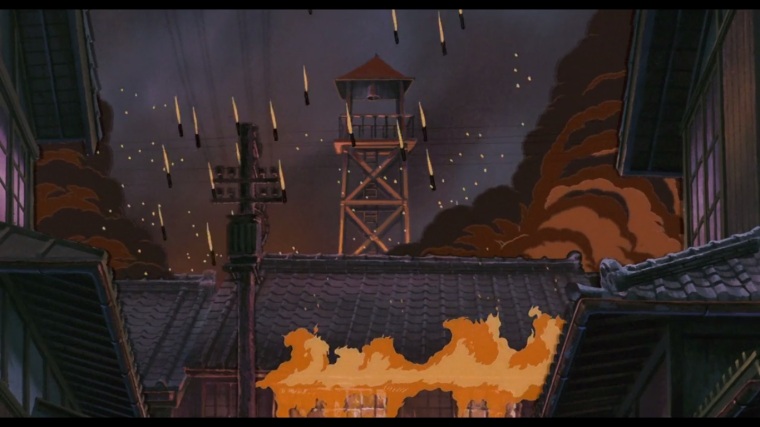
Not many animated movies show the adversities of war so vividly, especially one that is faced by such young leads. This film does it, and beautifully so. It is brutally honest and real. I mean, how often do you see a maggot-infested, burnt and bandaged body of the mother being dragged in front of her young son, being depicted in a movie? That said, the cruelty of war isn’t portrayed with blood and gore like you see in most war dramas. It rather uses magnificent landscapes and some soul stirring music to support a phenomenal screenplay.
What makes it to stand out as probably the best war movie, are three things. First, is the point of view. Instead of a soldier narrating his experiences, we have a young boy recounting his last few days with his sister. Roughly along the lines of ‘The Boy in the Striped Pajamas’ and ‘Empire of the Sun’.
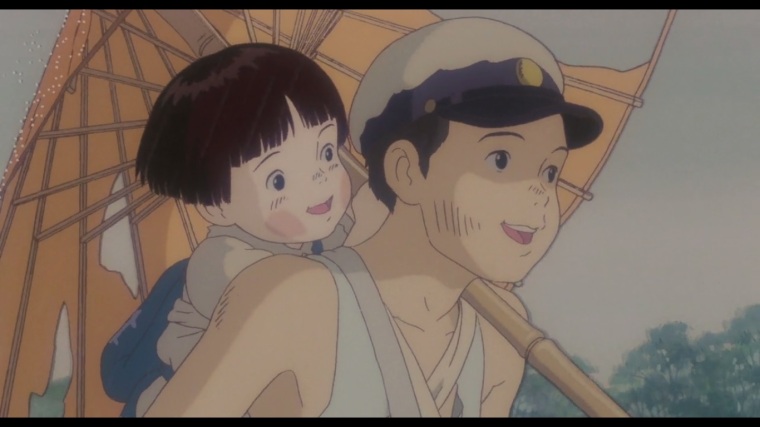
Second, is the lead characters’ portrayal. You don’t have kids who are unusually smart for their age, trying to be heroic or anything. The elder brother, Seita, seems to be in his early teens. He is lazy, gets annoyed, too proud, quite stubborn, loves his sister dearly, tries to act strong, doesn’t listen to advices, just like a random 14 year old. The younger sister, Setsuko, is around 5 years old. She gets excited by the tiniest of things her brother does for her, constantly asks for her mother, throws tantrums, wants to be pampered with love and good food, so much like a next door kid. That is probably why we connect with them so well, and grieve deeply over their loss.
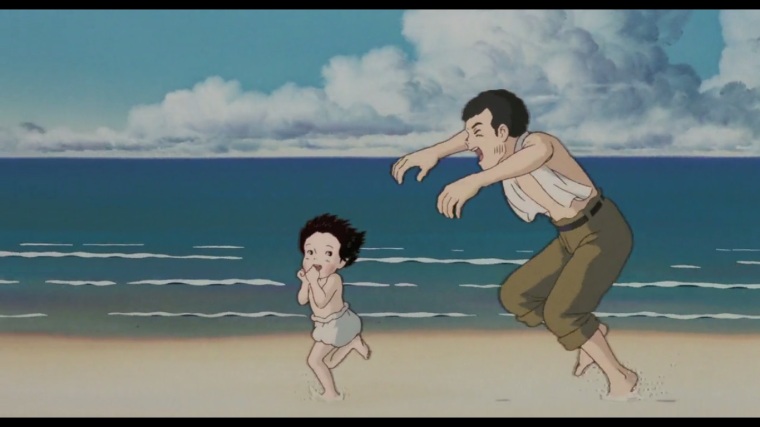
Third, is the pacing of the film. Nothing is too rushed or delayed. In fact the occasional pausing is where it strikes you the most. It lets you drink in the scene and relish it completely.
Like I’d mentioned before, it isn’t entirely sad from frame to frame either. There are some precious moments to behold too. The love you see between the siblings is so pure, relatable and adorable. The most poetic scenes though, are the ones with the fireflies. Whereas in one frame they bring in so much joy and comfort, in another frame they leave a trail of misery when Setsuko reveals her knowledge of their mother’s death.

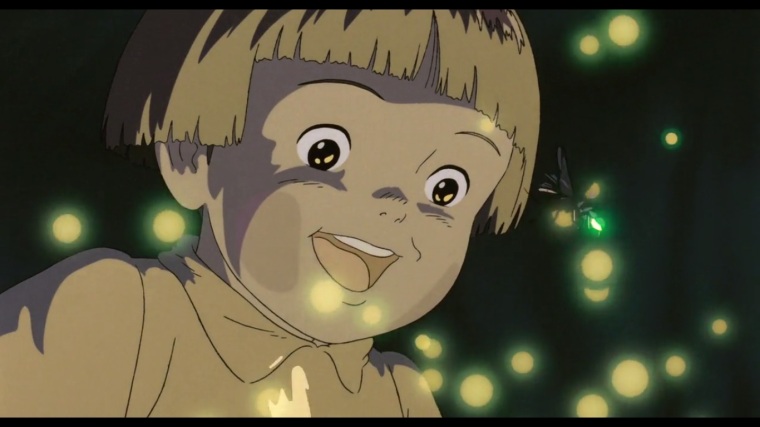
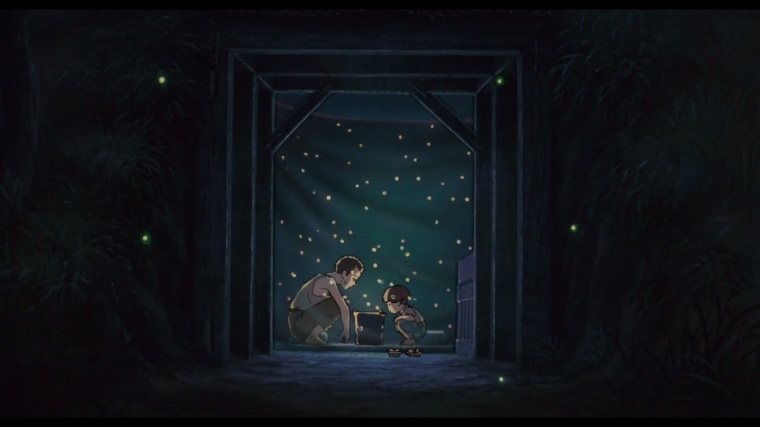
Gosh, it has such overpowering music that it haunts me even now. It adds another layer of enchantment to the whole movie. Mesmerizing yet depressing!

Also, I’ve noticed that there are some people who criticize the movie heavily because of Seita’s character. These critics claim that a real life character wouldn’t behave that way, and hence there is no real development seen in the story. What they don’t understand is that art is supposed to be seen from the creator’s perspective. Where most people fail is when they try to imbibe their ideas and ideals into a movie, and cry foul when it doesn’t play out well. That’s entirely wrong.
Here, the plot is based on real events from the life of Akiyuki Nosaka. His sister died because of him, and it was his survivor’s guilt which pushed him to pen down this story. He consciously made Seita that way, so that he ultimately causes both of their demise. Yes, Seita could’ve found a job, or apologized to the mean relative for his sister’s sake, or withdrawn the money earlier. Any of it might’ve saved them. That said, I would’ve probably done what Seita did. Ask me to choose between ‘working for my country’ and ‘stay idle and play with my sister who’s lost her loving mother’, darn right I’ll choose the latter. Seita was simply being a lazy carefree teen, and his mistake made him pay a heavy price. You know what? Seita could still have gone ahead and lived. Yet, he chose to keep his promise to his sister, that he’ll always be with her. He simply gave up on life itself, because he saw no meaning in it after being robbed of his only love, Setsuko. Now, that is just pure rhapsody, if you asked me!

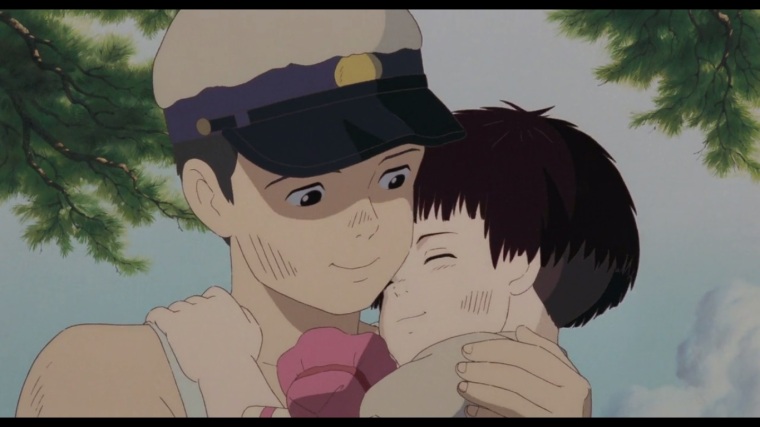

I think this movie is pretty underrated. It deserves a lot more attention and accolades. It’s a must watch film, preferably in Japanese since I loved the voice actors in the original more. Just ensure you have the heart to withstand it and a box of tissues nearby. It makes you think about how and whom the war really affects, just because few great minds wanted to fight for power. War still rages on in this planet for a variety of reasons. For all we know, there might be another Seita and Setsuko among them, hoping for a miracle to save them! If only we realize the fragility of our lives, the world would turn into a peaceful paradise.
Spirited Away (2001)
Ah! This one! I still feel perplexed at how long it was before I finally stumbled across this gem of a movie. It was a chance encounter really. There I was one morning, checking up random forums to find a good anime to start off, momentarily I stop scrolling only to have this name staring back at me – one that is so unique and mysterious. ‘Spirited Away’, it read. At first I thought it was just another fantasy anime, but a bit of google search revealed that it was actually an animated movie. Not just any random one at that, but the first ever Japanese animated feature film to have won an Academy Award way back in 2003! Until that very moment, I had never heard of Hayao Miyazaki or of his works. After I was done watching the movie however, I couldn’t wait to watch all of his movies. Why? Because ‘Spirited Away’ took me on a 2 hour journey, the impact of which would last a lot longer than that. It is the single most stupendous animated movie ever, overtaking all my previous bests!
Spirited Away (Sen to Chihiro no kamikakushi) is a 2001 Japanese animated film directed by Hayao Miyazaki under the Studio Ghibli production house. The story sets off with a young girl of 10, Chihiro, being driven to her new home by her parents. Chihiro misses her old school and friends and is constantly complaining. On their way however, Chihiro’s father takes a wrong turn and ends up in the middle of a forest facing an entrance to a tunnel. Out of curiosity, the parents enter this strange looking tunnel accompanied by a scared and skeptical Chihiro. They reach the end of the tunnel and find themselves in the middle of a rundown theme park, or so they assume. At the first sign of a restaurant, the parents start to gorge up all the food. Chihiro still skeptical refuses to indulge herself and instead takes a stroll around the place. Out of nowhere a young boy anxiously comes running to her and asks her to leave the place immediately before sunset. A confused Chihiro runs back to her parents, only to find them to have turned into pigs! The boy introduces himself as Haku and explains Chihiro that she’s now in the Spirit World and that she needs to sign a work contract with the witch, Yubaba, to be able to survive there. He also assures that he’s a friend and that he’ll help her get to the Human world. From there on her quest begins – quest to find the courage and kindness, to not just help herself and her parents, but also Haku. Does Chihiro succeed in doing so?
[Be ready for spoilers]
Having read the above gist, it is possible to say that it’s just another coming of age story of a ten year old girl, right? That certainly could be one way of saying it, but only as a gross understatement. This tale is so amazing that you can’t just write it off so plainly. What is so special about it? Well EVERY-darn-THING!
Not convinced? Okay. Let me give you a few more detailed instances as to why I’m madly, crazily in love with this movie. For starters, this is a 2D animation based movie, which means all of the frames you see on screen are hand-drawn and painstakingly done so, just like most anime. Now with that in mind, look at the marvelous designs painted before our eyes – be it the alley full of restaurants, or the ostentatious Yubaba’s place, or the beautiful sceneries the train passes by, or the bathhouse, or the light falling through the stained glass window, or even the leftovers from what was gobbled up by Kaonashi/No Face – it is so flamboyant that it transports you to another world. Each frame in Yubaba’s place can itself be a masterpiece – ceilings, walls, doors, huge antique vases, cutlery, toys – you name it. It is that rich, powerful and vibrant in the design aspects!


As if this wasn’t enough at a larger scale, the attention to detail done in this movie is mind blowing. When Chihiro’s father runs towards a restaurant you can see his zipper and handkerchief for a quick second. When Sen wears her shoes, she gives it a tap to check the fitting – just a young girl’s habit perhaps. When Kamaji takes herbs out of the containers, few strands slip out of his hand just like it would happen to any of us. When Lin comes in to hand over food to Kamaji, you’ll see his brush, paste in a holder and in another shot lot of cigarette butts are seen in the ashtray – just like any regular worker would have. When Chihiro starts work and is seen cleaning the floor, you’ll notice the paintings in the ceiling are all unique. I didn’t get these right off the bat. Only in the later viewings could I observe them. No one would mind if these weren’t included, as it doesn’t impact the main storyline at all. Yet, they were added in, despite the extra effort needed. It adds magic to an ordinary scene. It makes you pay attention to even the finer details that aren’t in the foreground. That’s where this movie stands apart.
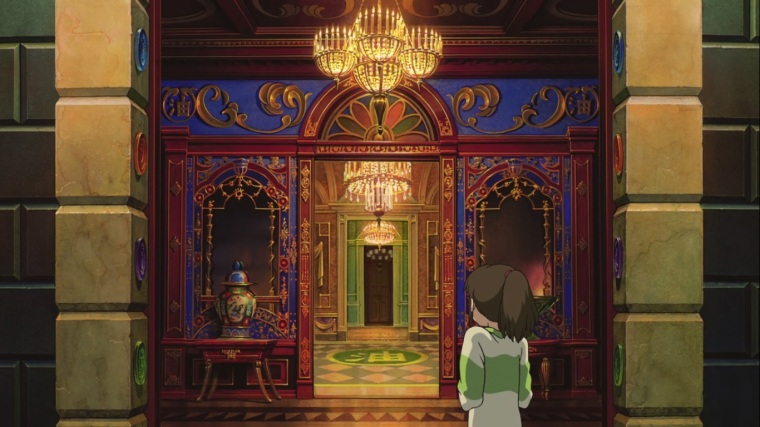

Another interesting thing is the amount of movements given to each character in each frame that it is so realistic to see. The way Chihiro and her parents walk in the beginning. The way Chihiro’s hair sways with the wind. If you take each scene in the bathhouse, there’s so much happening in one particular frame itself. When Lin asks Sen to take a look at the new guest who’s loaded with gold, look how other people keep working in the lower floors. Another one is the boiler room sequence – Kamaji’s eight hands are moving, the soot helpers are carrying coal and then there’s Chihiro. This might not be obvious to see when the whole focus is on the story, but if you think of it in 2D and the effort needed to bring about changes concurrently to more than one character in each frame, it really is a laborious task worthy of appreciation.
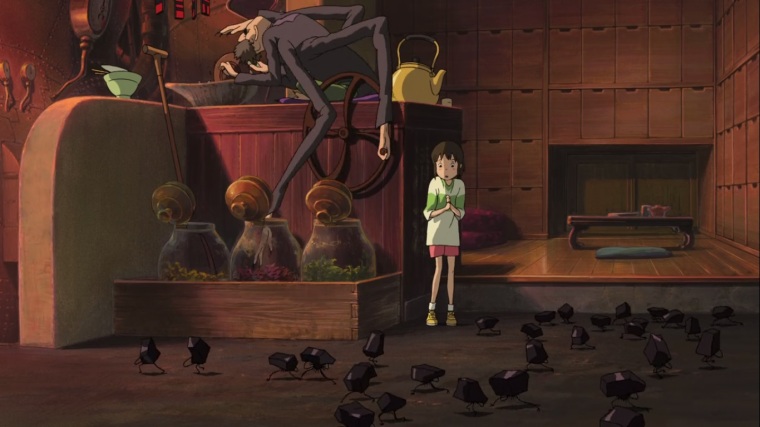
Okay. Let’s assume you don’t want to bother yourself with all these unnecessary details which happen behind the screen. Will it still be extraordinary? Absolutely! The amount of themes and symbolism used in this movie is so high that every time you rewatch it you’re sure to find something hidden that you’d missed out the last time.
There are parallels drawn all the time. Initially you’ll see Chihiro taking the stairs to the boiler room after meeting Haku. She’s so terrified that she pulls down her whole body one step at a time. The next morning though she’ll walk ever so casually on the same stairs. This gets to a whole new level when she’s trying to save a wounded Haku, and doesn’t even stop to think twice before she dashes across a loose pipeline. Can you see how her character grows in these few scenes alone?
One other good theme you find is ‘What you see isn’t what it really is’. The best example for this is the Stink Spirit. Sen’s first customer is initially mistaken for a stink spirit, while it is actually a River God, whose appearance has changed due to pollution by humans. Right there you have a bit of environmentalism thrown at you too. Kamaji seems so mean at first, but he readily helps Chihiro every time. You’ve got Zeniba. Though she looks like her scary twin, she’s anything but that – a polar opposite actually. Then you have No Face, who is so mysterious all the time. First he seems nice when he offers bath tags to Sen. Then he becomes scary while he gobbles up people. Again he becomes sweet when he helps out Zeniba later on.

A deeper meaning is weaved into the storyline skillfully. It takes a good deal of time to notice them and understand. Like, how important our identity is to us. Haku is manipulated by Yubaba, just by surrendering his name. Take No Face. He is lost and lonely. He has no identity. He notices how the workers treat a person with gold. He wants an identity and so swallows the greedy frog, assumes his character and speech. While every worker treats him well for his gold, Sen differs from it. Sen realizes that it is the greed of the workers causing him to misbehave and helps him. Finally he finds his identity as a helper at Zeniba’s. In the climax, when Chihiro is asked to find her parents among the pigs and she says ‘none of them are’ what I think it means is that her parents aren’t pigs in her eyes and so they’re not among them. Cool, no?

Similarly, something said/done at one point connects to another at a later instance. If you notice the polluted River God it has a direct connection to Haku’s identity as a River God too. Kamaji recalls Haku coming to him sometime back and saying he lost his home and has nowhere to go. That was because his river went underground thanks to the urbanization, which is confirmed by Chihiro later. If that isn’t impressive take a look at the heavily debated ending. Chihiro gets out of the tunnel, turns around and takes a long look at it. It looks as though she’s forgotten everything that happened in the spirit world. Heartbroken? Oh, don’t be. Recollect what Zeniba says early on, that if something happened it’ll come to us at a later time even if we can’t remember it. So, I think that Chihiro does forget everything, but deep down it has changed her as a person and she’ll remember it all someday, just as she recollected falling into Haku as a child. This however changes in the English dub version. Which is why I prefer to watch it in Japanese. The emotions in the dialogues are better in the original, I feel, but it’s also just a personal preference from all the anime watching.

Last, but not the least is the fantastic music. Right from the start to the moment the end credits finish rolling, it’s got wonderful music that doesn’t just breathe life into the story but also shifts it to another level. It connects with the plot perfectly at every instance. A special mention here would be the music during the train sequence. There is some deep meaning to it, but till now I’m unable to figure it all out. It just has a sad undercurrent to it all the while. Nevertheless, the train gliding across the gleaming water, the beautifully painted lonely islands spaced out in the distance, the transparent humans exiting towards nothingness, the neon signboards hanging midair and all of this accompanied by nothing but a mesmerizing melancholic music is one truly memorable part of the whole movie. Also, there is this weirdly mysterious tune played every time No Face appears. Weird, yet addicting.
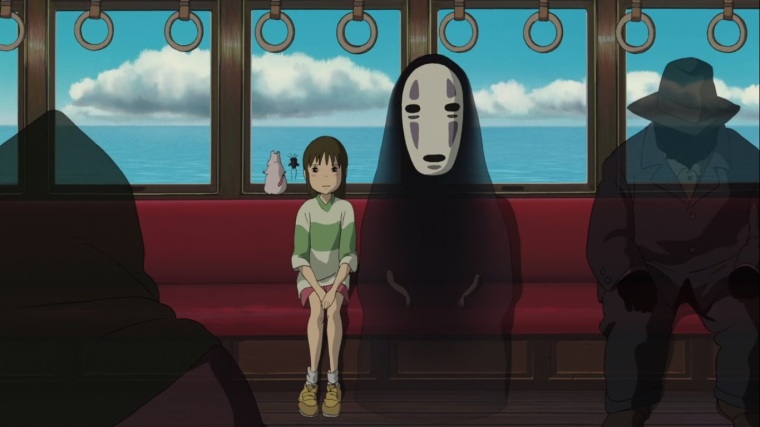
Well, that’s all about what I’ve experienced and grasped from this remarkable movie. I know most of what I’ve written would feel like random gibberish if you haven’t watched the movie yet. Maybe give this a read after you’ve watched? I assure you it’ll be worth it. Maybe you’ll find more such symbols that I’ve missed. If you have a taste for simple stories with unbelievable amount of artistry and meaning to it, then go for it. It’s truly a visual and a cognitive treat. As for me, I’m all geared up to be transported to more of these awe-inspiring worlds of Miyazaki and Ghibli. Mata ne!
L.C.A – OK Kanmani (2015)
O Kadhal Kanmani is Mani Ratnam’s yet another masterpiece released in 2015. A story of Aadhi and Tara, two successful youngsters on a well defined career progression with a similar disbelief in marital bonds, how they meet each other and find love through the reflections of an older couple. I was so captivated by it that the first time I watched it I had to rewatch 3 times back to back to quench my thirst. As I write this post now, I’m watching it yet another time and still it manages to shower love all over again even after a year.
The initial meeting between Aadhi and Tara happens in a train station. As fate would have it they meet again in a friend’s wedding. While most guys break their heads over the tricks with which they can get a girl’s phone number, Aadhi does it with such ease, thanks to both of them being extroverted with a modern mindset. Their following conversation gives us the picture that both are not into marriage and the related troubles. Soon after both start dating, and slowly falling for each other. They decide to stay in a live-in relationship alongside an older couple – Ganapathi and Bhavani, until each of them would part ways in the direction their career leads them. How the older couple’s love influences the younger minds is what the rest of the movie is.
Dulquer Salmaan as Aadhi and Nithya Menen as Tara are indefectible and spot on. It doesn’t ever feel like they are acting, for it is so natural and done with effortless ease. Their accents are adorable. They’ve got a certain quirk in their expressions that makes you fall for their respective characters more and more. The feelings they emote are so real that it makes you feel like you’re not the audience anymore, but you’ve become a part of the movie itself. Truly, Dulquer and Nithya are wonderful artists. They give life to their characters with such flawless perfection. If Madhavan was the chocolate boy of yesteryear, Dulquer has bagged the title for the current generation. He oozes charm throughout and makes you go mad for him. Even then, in this movie I felt Nithya was the show stopper. More often my eyes were drawn towards her and her way of portraying a scene. She is one of those rare actresses who can be full of elegance, minimally /not at all revealing and yet leave you seduced and captivated.
There’s a brilliance with which Mani Ratnam handles romance. It’s something of an art, an art that not many after him has perfected. The chemistry between the lead pair is beautifully painted. The innocent flirtations, the nervousness & excitation of seeing each other, the intense passions running high, the subtle yet strong flow of lust, the constant undercurrent of love, the anger and disappointment bursting out into frequent altercations – all of it feels so fresh and true to life. It is so realistic that even if you’ve never had a love life, it makes you feel like you’ve always been a part of one. Almost 90% of the time I was sheepishly grinning from ear to ear looking at these two and their crazy mad love. It is so dreamy that it leaves an aftertaste that lingers on your mind for days to come.
What better place to stage such fiery chemistry than Mumbai? A city full of energy and passion. The trains, the Gateway of India with hundreds of pigeons, Mumbai rains, Marine drive – everything perfectly Mumbai. The fun here is that although the tale unfolds in Mumbai, the Tamil flavors take the center stage. Hardly any Hindi is spoken. At times Aadhi is shown to be managing with broken Hindi alone. In fact more stress is given to usage of pure Tamil words in places, which adds more beauty to the dialogues and lyrics.
Then comes the Older couple – Prakash Raj as Ganapathy and Leela Samson as Bhavani. They fit their roles perfectly. Everyone keeps thinking the movie is entirely about live-in relations, while the truth is that it’s less about it and more about how the older couple’s affection and love effects a change in the lead pair’s perspective of trust and commitment. Why wouldn’t it? For their bond is so strong even in such old age and with such tough medical conditions.
Cinematography is beyond this world! Want to play around with colours? Leave it to P.C.Sreeram. What a genius! He’s a class apart and a God in his field, right from the days of Poove Poochudava, Agni Natchatram, Thiruda Thiruda to this day he keeps weaving magic. How many different hues are seen in this movie alone – pink, blue, green, yellow, red – you name it. While Mani creates a sketch, Sreeram brings it to life through his lens.










Playing with sunlight is an inherent talent to him I guess. Look how the same background is used with differing light settings to showcase differing moods. One being bright and fun, the other bring dull and gloomy.
Cool, no? There are other such subtle elements all over the movie that takes you to another world altogether, giving you a glimpse of magic in everyday things.
Quite a few scenes in the movie seem to bring back memories of Alaipayuthe. The beach, the bike ride, the bus ride, the train, the lead pair meeting up in a friend’s marriage, a dressing mirror that adds up the romance, bit of fun beneath the blankets, a dance between the lead pair with a vest-clad male protagonist that increases the heat. That is the director’s way of teasing us with nostalgia I guess.
Ah, the music! It’s A.R.Rahman and Vairamuthu combo. How in the world can it ever go wrong? They are like honey to the ears, such soul stirring music – a mix of the old world and the new world charm. They certainly fit the narrative like a glove. Though I love each and every track, my absolute favourite is the constant BGM – ‘Naane Varugiren’.
Chinnanjiru Viral Kodu
Chinnanjiru Chinnanjiru Idam Kodu
Chinnanjiru Aasaikku Poi Solla Theriyaathae
It gives you the feeling of sailing through thin air! The next best is indeed ‘Mental Manadhil’ – peppy and fresh.
Yup, OK Kanmani is a must watch movie. It is a love story we deserve for it gives the romance not seen for ages. A story that is another milestone for the director. A story that brings back the word ‘Kanmani’ into today’s trend. A story that makes you long for more. A story the leaves you in heaps of love.
Lost Tradition
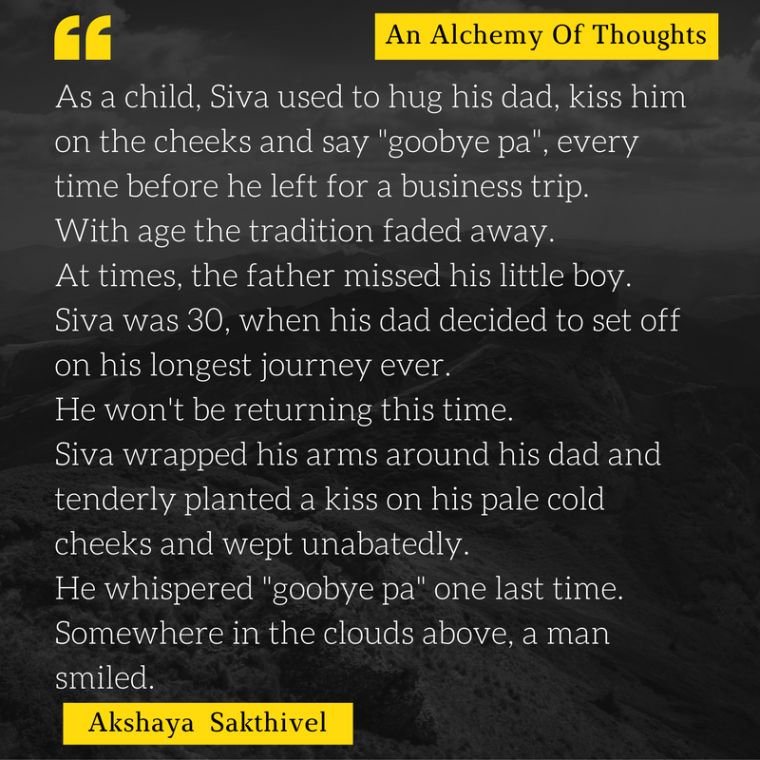
Pain
Pain isn’t when you have monday morning blues, if a few good people can brighten you up
Pain isn’t when you feel insomnia creeping up, if there’s a nice book to keep you engaged
Pain isn’t working out for hours, if it’s done with interest and passion
Pain isn’t having less money, if you can make your loved ones smile
Pain isn’t feeling icy cold winds, if you have a warm blanket or a person to hug
Pain isn’t being a little too thin, if you can slip between cracks easily
Pain isn’t being a little too fat, if you can tackle bullies without extra effort
Pain isn’t getting beaten up, if you’ve got some love and medication to heal you
Pain isn’t losing, if you can learn from that experience and correct your mistakes
Pain isn’t dying, if you’ve loved and etched a place in a few people’s hearts
What is pain?
Pain is being ignored and forgotten, when your dear ones don’t have time for you
Pain is old memories, when you realize a lot has changed since then
Pain is being judged by skin color and race, when you have plenty of talent in you
Pain is seeing someone cry, when you can’t do anything to stop it
Pain is hearing harsh words from a loved one, when you know it’ll scar you forever
Pain is having a breakup, when you’ve done absolutely nothing wrong
Pain is to see your loyalty being broken, when it’s from a person you trusted a lot
Pain is losing someone to God, even if it’s just a person you met a day before
Pain is seeing people hate one another, discriminate, fight with and kill for anything and everything, when there’s so much to love in every individual and so much love to share with the whole wide world
Yes that’s Pain
But then again
Pain isn’t a weakness
Pain is meant to wake you up
Pain is meant to strengthen you
Strength to be a better you
And strength maybe to make the world a better place too!







